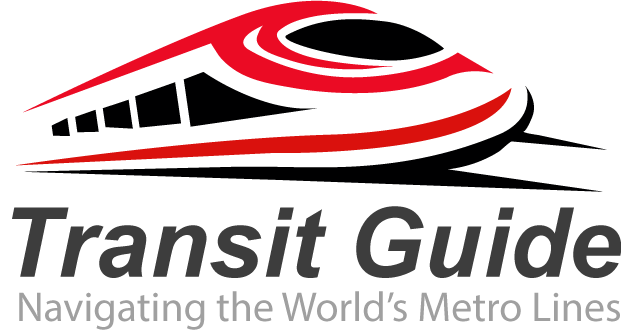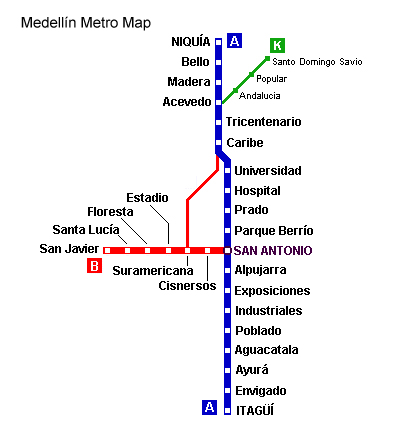Medellín Metro System: Your Complete Guide to Colombia’s Premier Urban Transit
The Medellín Metro system stands as one of South America’s most efficient and modern urban transportation networks. Serving Colombia’s second-largest city, this integrated transit system has transformed Medellín into a model of urban mobility and social inclusion.
Overview of the Medellín Metro
The Metro de Medellín operates as the backbone of the city’s public transportation network, connecting urban centers with peripheral neighborhoods through multiple transit modes. Launched in 1995, the system combines traditional metro lines, cable cars (Metrocable), buses (Metroplús), and trams to create a seamless travel experience across the Aburrá Valley.
Metro Lines and Coverage
Line A (Blue Line)
The main artery runs north-south through Medellín’s core, connecting Niquía in the north to La Estrella in the south. This 25.8-kilometer line features 21 stations and serves major destinations including:
- El Poblado (upscale district)
- Estadio (sports complex area)
- Universidad (university zone)
- Centro (downtown)
Line B (Orange Line)
Running east-west, Line B spans 5.6 kilometers with 7 stations, connecting San Antonio to San Javier. This line intersects with Line A at San Antonio station, providing crucial cross-city connectivity.
Metrocable: The Revolutionary Cable Car System
Medellín’s Metrocable represents one of the world’s first urban cable car systems integrated into a metro network. These aerial gondolas serve hillside communities that were previously difficult to access:
- Line K: Connects Acevedo to Santo Domingo
- Line J: Links San Javier to La Aurora
- Line L: Serves the Santo Domingo-Savio area
- Line M: Connects to Miraflores
- Line H: Links to Oriente (newest addition)
The Metrocable system not only improves transportation but also promotes social inclusion by connecting low-income neighborhoods to the city center.
Metroplús Bus Rapid Transit
The Metroplús system features dedicated bus lanes that complement the metro lines. Two main routes operate:
- Route 1: Connects Universidad to Aranjuez
- Route 2: Serves the western corridor
These articulated buses use the same fare system as the metro, ensuring integrated payment across all transport modes.
Fares and Payment Options
The Medellín Metro uses a unified payment system called the Cívica Card. Current fares (subject to change):
- Single ride: Approximately $2,800 COP (Colombian Pesos)
- Multi-ride discounts available
- Student and senior discounts offered
The Cívica Card can be purchased and recharged at any metro station. Cash payments are not accepted on vehicles.
Operating Hours and Frequency
The Metro operates:
- Monday to Saturday: 4:30 AM to 11:00 PM
- Sundays and holidays: 5:00 AM to 10:00 PM
- Peak hours: Trains run every 3-4 minutes
- Off-peak: Every 5-7 minutes
Key Destinations and Tourist Attractions
The metro system provides easy access to Medellín’s top attractions:
- Botanical Garden: Accessible via Universidad station
- Explora Science Park: Near Universidad station
- Guayaquil Station: Gateway to downtown shopping
- Poblado Park: Via Poblado station
- Comuna 13: Accessible through San Javier and Metrocable
Safety and Accessibility Features
Medellín Metro prioritizes passenger safety and accessibility:
- Security personnel and cameras throughout the system
- Wheelchair accessibility at all stations
- Audio announcements for visually impaired passengers
- Women-only cars during peak hours (pink cars)
- Emergency communication systems
Environmental Impact and Sustainability
The metro system significantly reduces Medellín’s carbon footprint by:
- Decreasing private vehicle usage
- Using electric-powered trains
- Promoting sustainable urban development
- Reducing air pollution in the Aburrá Valley
Future Expansions and Developments
Ongoing and planned projects include:
- Tranvía de Ayacucho: Modern tram connecting downtown to eastern districts
- Line A extension to Sabaneta
- Additional Metrocable lines to serve more hillside communities
- Integration with regional transportation networks
Tips for First-Time Users
- Purchase a Cívica Card upon arrival at any station
- Plan your route using the official Metro app or website
- Avoid rush hours (7-9 AM, 5-7 PM) when possible
- Keep belongings secure and stay aware of surroundings
- Allow extra time for transfers between different transit modes
- Learn basic Spanish phrases for asking directions
Conclusion
The Medellín Metro system represents more than just transportation—it’s a symbol of urban transformation and social progress. Whether you’re a tourist exploring the city or a resident commuting daily, this comprehensive network offers reliable, affordable, and safe transit throughout the metropolitan area. The integration of traditional metro lines with innovative cable cars and bus rapid transit creates a unique transportation experience that has become a model for cities worldwide.
By utilizing the Medellín Metro, travelers contribute to sustainable urban mobility while accessing all corners of this vibrant Colombian city efficiently and affordably.

